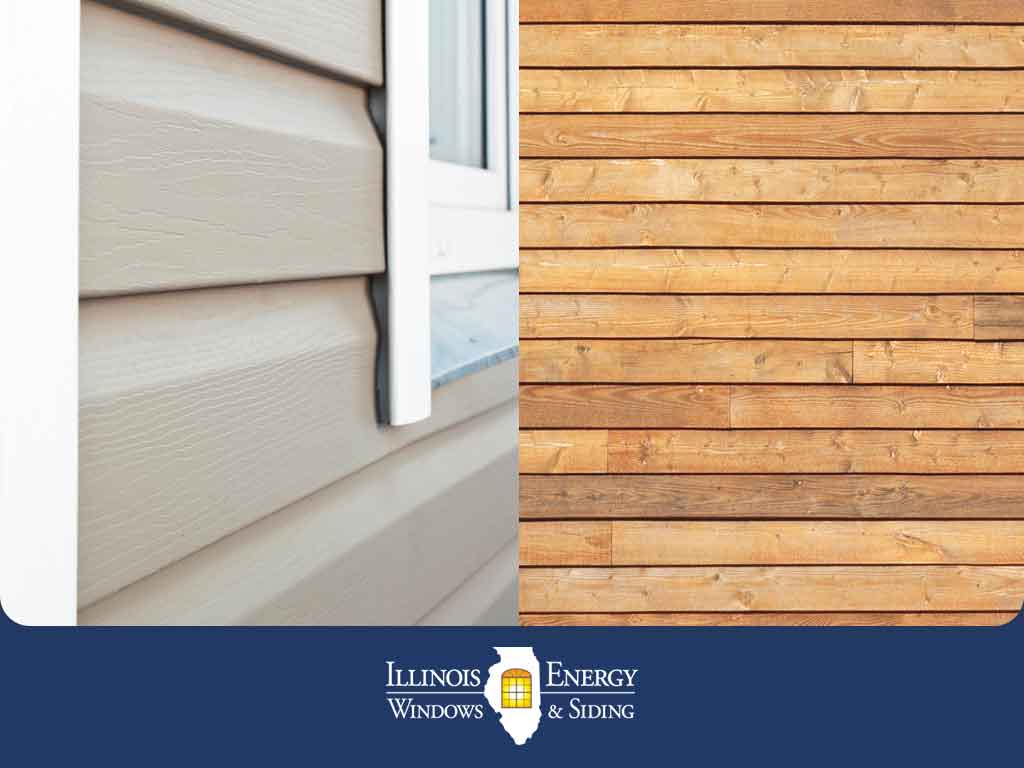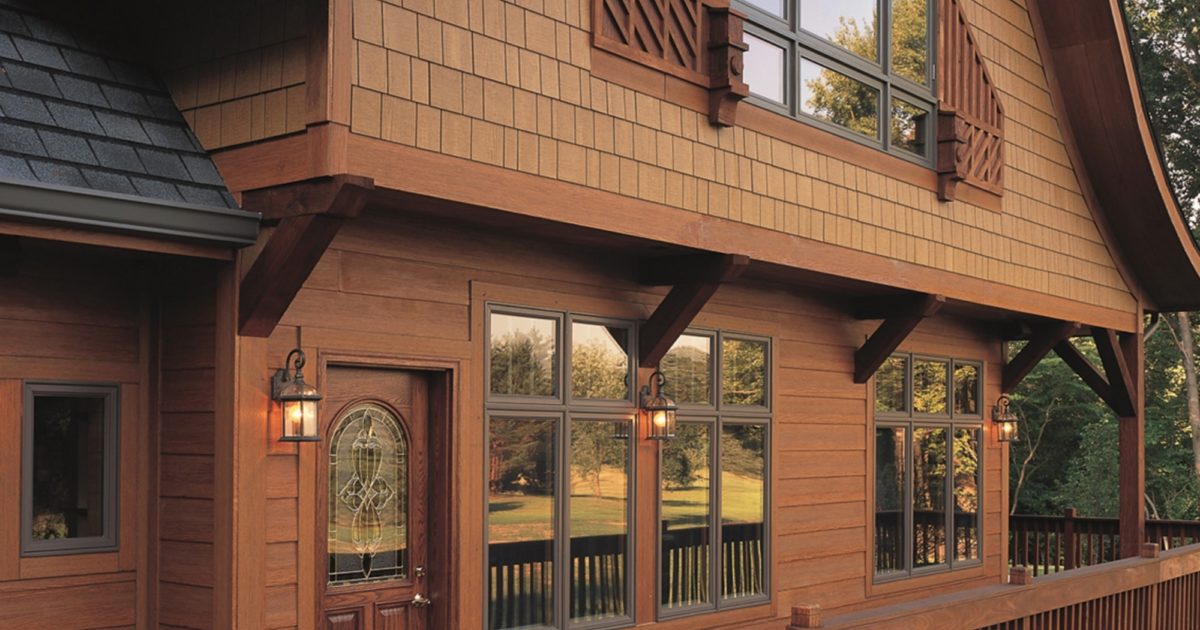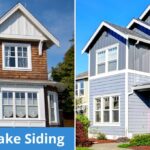Choosing the right siding for your home is a big decision. It’s not just about aesthetics; it’s about durability, cost, and the overall feel of your space.
If you’re torn between cedar shake siding and vinyl, you’re not alone. Each option offers its own unique set of benefits and challenges, and making the right choice can feel overwhelming. Imagine coming home every day to a house that truly reflects your style while also standing up to the elements.
The good news is that with a little guidance, you can find the perfect fit for your home. We’ll break down everything you need to know about cedar shake siding versus vinyl siding, helping you make an informed decision that you’ll feel great about for years to come.
Cedar Shake Siding Features
When choosing siding for your home, understanding the features of cedar shake siding can guide you in making a confident decision. Cedar shake siding offers unique attributes that set it apart from other materials like vinyl. Let’s dive into the distinct features that make cedar shake siding a popular choice among homeowners.
Natural Aesthetic Appeal
Cedar shake siding is a favorite for its rustic and authentic look. It brings a warm, natural charm to your home that synthetic materials often cannot match. Imagine walking up to a house that feels like a cozy cabin in the woods, thanks to the rich texture and color variations of cedar shakes.
Unlike vinyl, which can sometimes appear too uniform, cedar shake siding has a distinctive character with each piece offering its unique pattern. This individuality can significantly boost your home’s curb appeal, making it stand out in the neighborhood.
Durability And Lifespan
While cedar shake siding is known for its beauty, it is also revered for its durability. Cedar is a strong wood that naturally resists decay and insect damage. This makes it a reliable choice for homeowners who want siding that lasts.
In your experience, you might have seen older homes with cedar shake siding still looking robust after decades. With proper care, it can outlast many other siding options, ensuring your investment is worthwhile.
Maintenance Requirements
Maintaining cedar shake siding requires a bit more attention than vinyl. You might need to apply treatments to protect it from moisture and pests. Regular inspections to catch any early signs of wear and tear are crucial.
Consider how much time you can dedicate to maintenance. If you’re someone who enjoys hands-on care for your home, cedar shake siding could be a rewarding option. On the flip side, if you prefer low-maintenance materials, think carefully about this choice.
Environmental Impact
Cedar shake siding is a greener option compared to vinyl. Cedar is biodegradable and comes from a renewable resource, making it a better choice for eco-conscious homeowners.
Think about the environmental footprint of your siding choice. If sustainability is important to you, cedar shakes align well with these values. You can have a beautiful home while also caring for the planet.
Choosing siding involves balancing aesthetics, durability, maintenance, and environmental impact. What’s your priority when it comes to siding? Cedar shake siding offers a unique set of features that might just fit what you’re looking for.

Credit: www.illinoisenergy.com
Vinyl Siding Characteristics
Cedar shake siding offers a rustic, natural look, enhancing a home’s aesthetic appeal. Vinyl siding provides durability and low maintenance, ideal for budget-conscious homeowners. Both options present unique characteristics, catering to different preferences and needs.
Vinyl siding has become a popular choice among homeowners for its practical benefits and appealing aesthetics. If you’re considering a siding upgrade, understanding the characteristics of vinyl can help you make a well-informed decision. This versatile material offers advantages in cost, style, durability, and installation that might surprise you.Cost-effectiveness
Vinyl siding is known for being budget-friendly. It costs less than cedar shake siding, making it an attractive option for those looking to save money on home improvements. You can enjoy the look of a refreshed exterior without breaking the bank. Plus, its durability means fewer repairs over time, further saving you money.Variety Of Styles
Vinyl siding offers an impressive variety of styles and colors. Whether you prefer a classic look or something more modern, there’s likely a vinyl option that fits your taste. Imagine driving down your street and seeing your house stand out with its unique charm. The ability to customize your home’s appearance is a powerful feature of vinyl siding.Weather Resistance
Vinyl siding is built to withstand the elements. It resists moisture, which can prevent issues like rot and mold that often plague other materials. Remember that storm last year? If your house had vinyl siding, it likely came through unscathed. This resilience makes vinyl siding a smart choice for homes in areas prone to harsh weather.Ease Of Installation
Installing vinyl siding can be a straightforward process. Many homeowners appreciate how manageable it is to add vinyl siding to their homes. Could you tackle this as a DIY project? It’s possible, but even hiring a professional won’t break the bank due to the efficiency of installation. This ease of installation means less stress and quicker results for you. Considering these characteristics, could vinyl siding be the right choice for your home? It offers a blend of affordability, style, durability, and convenience that might just fit your needs perfectly.Comparing Costs
Choosing between cedar shake siding and vinyl for your home can feel like a big decision. One of the key factors to consider is the cost. It’s not just about the initial price tag, but also how much value you get over time. There might even be hidden expenses that you haven’t thought about. Let’s break it down so you can make the best choice for your home and your wallet.
Initial Investment
When you first look at cedar shake siding, it might catch your eye with its natural beauty. But it’s important to note that this option tends to be pricier up front. You’re paying for authentic wood and craftsmanship. On the other hand, vinyl siding is typically more budget-friendly. It’s manufactured to be cost-effective, and installation is usually easier and cheaper. If you’re looking to keep your initial costs down, vinyl might be a solid choice.
Long-term Value
Think about what you want your home to look like in five or ten years. Cedar shake siding can age beautifully, adding character and charm, which might increase your home’s value. It’s like investing in a classic car that gets better with time. Vinyl siding, while durable, can sometimes fade or become less appealing as trends change. It’s essential to weigh how important long-term aesthetics and potential resale value are to you.
Hidden Expenses
Have you considered maintenance costs? Cedar shake requires regular upkeep, like sealing and staining, to maintain its appearance and protect against pests. That means more trips to the store and possibly hiring professionals. Vinyl is relatively low-maintenance, saving you time and money. However, if damaged, it can be more difficult to repair, sometimes requiring complete replacement of sections. Be sure to factor in these hidden costs when making your decision.
Now, take a moment to think: What’s more important to you? The initial savings or the long-term investment? Perhaps you value the beauty and authenticity of cedar, or maybe the practicality and affordability of vinyl appeals to you. Understanding these cost dynamics can steer you towards the best choice for your home.

Credit: factorydirectsiding.com
Energy Efficiency
Cedar shake siding and vinyl siding offer distinct energy efficiency benefits. Homeowners often seek materials that can help reduce energy costs. A siding choice impacts both heating and cooling needs. Understanding each option’s energy efficiency is crucial for decision-making.
Insulation Properties
Cedar shake siding provides natural insulation. Wood fibers trap air, reducing heat transfer. This helps maintain indoor temperature stability. Vinyl siding, on the other hand, often includes foam backing. This enhances its insulation capabilities. Foam-backed vinyl can closely match cedar’s insulating properties. Both options can improve a home’s energy efficiency.
Impact On Heating And Cooling
Proper siding impacts heating and cooling costs significantly. Cedar shake siding helps keep homes warm in winter. It reduces heat loss through its natural insulation. In summer, it can help prevent heat gain. Vinyl siding with foam backing offers similar benefits. It minimizes heat transfer, aiding in temperature regulation. Choosing the right siding can lead to energy savings.
Aesthetic Considerations
Cedar shake siding offers a rustic, natural appearance that enhances a home’s charm. Vinyl siding provides a sleek, modern look with versatile design options. Both materials cater to different aesthetic preferences.
When deciding on siding for your home, aesthetic considerations play a crucial role. The exterior of your home is the first impression you give, and it reflects your taste and style. Choosing between cedar shake siding and vinyl often boils down to the look you want to achieve. Each material offers distinct visual qualities that can dramatically influence your home’s curb appeal. Let’s dive into how these two options stack up in terms of aesthetic value.Traditional Vs. Modern Look
Cedar shake siding offers a classic, timeless appeal. Its natural wood texture creates a warm, rustic charm that’s perfect for a traditional or cottage-style home. Imagine sitting on your porch, surrounded by the earthy tones of cedar, evoking memories of family gatherings in a cozy, welcoming space. On the other hand, vinyl siding can provide a sleek, modern appearance. With its clean lines and smooth finish, vinyl is ideal for contemporary homes. It offers a polished look that’s easy to maintain, making it a practical choice for those who prefer a modern aesthetic.Color And Finish Options
Cedar shake siding comes in various natural shades, from light honey to deep chestnut. You can also stain or paint it to match your desired color palette. The ability to customize can be a delightful advantage if you enjoy personalizing your space. Vinyl siding offers an extensive range of colors and finishes straight from the manufacturer. Whether you want a subtle pastel or a bold, vibrant hue, vinyl has you covered. Many homeowners appreciate this no-fuss approach as it allows them to achieve their dream color scheme without additional treatments. Choosing between cedar shake and vinyl siding ultimately depends on your personal style. Do you lean towards the traditional charm of wood or the modern efficiency of vinyl? Your decision will not only affect your home’s aesthetic but also its overall vibe. So, take your time, consider your lifestyle, and envision the look you want for your home.Maintenance And Upkeep
Cedar shake siding requires regular upkeep, including treatments to prevent rot and insect damage. Vinyl siding offers easier maintenance with occasional cleaning to maintain its appearance. Both options have unique benefits tailored to different preferences and needs.
When considering cedar shake siding versus vinyl, maintenance and upkeep are crucial factors to think about. Both materials offer distinct advantages and challenges in terms of cleaning, repairs, and the longevity of their appearance. Your choice might depend on how much time and effort you’re willing to invest in keeping your home looking its best.Cleaning And Repairs
Cedar shake siding requires regular cleaning to prevent mold, mildew, and insect infestation. You may need to power wash the cedar periodically and apply treatments to protect it from pests and weathering. Repairs could also involve replacing individual shakes if they become damaged or rot over time. Vinyl siding is relatively low maintenance, as it only needs occasional cleaning with soap and water. If a piece of vinyl siding gets damaged, it can be more straightforward to replace or repair than cedar. However, color matching might be a challenge if your siding has faded over time.Longevity Of Appearance
Cedar shake siding offers a natural, rustic look that can add charm to your home. However, it can fade and change color over time, especially if not adequately maintained. Some homeowners appreciate this weathered look, but if you prefer a consistent appearance, regular staining or painting is necessary. Vinyl siding retains its original appearance longer, as it’s designed to resist fading and discoloration. This means less frequent touch-ups are needed to keep it looking new. But consider whether you value the uniformity of vinyl over the unique character that cedar can develop. Imagine the satisfaction of stepping back and admiring your home’s exterior, knowing you’ve chosen a siding material that matches your maintenance style. Would you prefer a natural look that requires hands-on care, or a more uniform appearance that’s simpler to maintain?Environmental Considerations
Cedar shake siding offers a natural look but involves cutting down trees, impacting forests. Vinyl siding, made from plastic, contributes to pollution during production and disposal. Both options have environmental impacts, influencing decisions based on sustainability priorities.
When choosing between cedar shake siding and vinyl, environmental considerations play a crucial role. It’s not just about aesthetics or cost; how these materials impact the planet is equally important. You might be wondering which option aligns better with eco-friendly practices. Here, we’ll examine the sustainability, recycling, and disposal of each material, offering insights that might just tip the scale in your decision-making process.Sustainability
Cedar shake siding comes from natural wood, which is a renewable resource. Trees can be replanted and harvested sustainably, supporting biodiversity and forest health. However, consider the energy used in processing and transporting cedar, which can affect its overall eco-friendliness. Vinyl siding, on the other hand, is made from polyvinyl chloride (PVC), a non-renewable resource derived from petroleum. Its production involves chemicals that can be harmful to the environment. Yet, vinyl siding’s durability means it rarely needs replacement, which might reduce environmental impact over time.Recycling And Disposal
Cedar shake siding is biodegradable and can be composted or left to decompose naturally. This reduces landfill waste and returns nutrients to the soil. But, be cautious of treated wood, which can have chemicals that complicate disposal. Vinyl siding presents a different challenge. While it is technically recyclable, few facilities accept it, making disposal tricky. The reality is, much of it ends up in landfills, where it can take centuries to break down. This poses a question: is durability enough to offset the challenges of recycling? When weighing these factors, consider the long-term environmental impact of your siding choice. What aligns best with your values and the future you envision for our planet? As you ponder these questions, remember that every decision, no matter how small, contributes to a larger environmental footprint.Regional Climate Factors
Regional climate influences the choice between cedar shake siding and vinyl. Cedar handles moisture well, ideal for humid areas. Vinyl offers durability in extreme temperatures, fitting for varied climates.
When choosing between cedar shake siding and vinyl siding, understanding how regional climate factors play a role is crucial. Weather conditions can significantly affect the longevity, appearance, and maintenance needs of your siding. Whether you’re living in a humid coastal area or a dry desert, knowing which material suits your climate can save you time and money.Suitability In Different Climates
Cedar shake siding is a natural material that thrives in specific environments. It performs well in regions with moderate climates where extreme temperature fluctuations are rare. On the other hand, vinyl siding is highly adaptable and can withstand a variety of weather conditions. It’s a popular choice in areas with harsh winters or scorching summers due to its resilience. Have you ever noticed how certain materials seem to deteriorate faster in your area? That’s the climate at work.Impact Of Humidity And Temperature
Humidity can be a dealbreaker for many siding options. Cedar shake siding, being organic, is prone to absorbing moisture, which can lead to rot and mold in humid regions. Regular maintenance, such as sealing and staining, becomes necessary to prevent damage. Vinyl siding, however, is impervious to moisture, making it a better option for humid climates. It doesn’t warp or rot, providing peace of mind in regions with high rainfall. Temperature changes can also affect siding materials. Cedar can expand and contract, leading to cracks if not installed properly. Vinyl, though, is more flexible and handles temperature shifts better, reducing the risk of damage. Have you considered how the weather patterns in your area might influence the maintenance of your home’s exterior? Understanding these factors can guide you in making an informed decision for your home.Making The Right Choice
Choosing between cedar shake siding and vinyl can be tricky. Each material offers unique benefits. Factors like budget, style, and future plans play a role. Understanding these can guide you to the best decision.
Personal Preferences
Do you love a natural look? Cedar shake siding may be for you. It offers a warm, rustic feel. Vinyl siding provides a sleek, modern appearance. Think about your home’s style. Your choice should match your vision.
Budget Constraints
Consider your budget carefully. Cedar shake siding can be pricey. It requires more upkeep too. Vinyl is often cheaper. It’s low-maintenance and long-lasting. Weigh the costs before deciding.
Long-term Goals
Think about your future plans for your home. Cedar may need more care. But it can boost home value. Vinyl is durable and requires less care. Consider how long you plan to stay. This can affect your choice.

Credit: allurausa.com
Frequently Asked Questions
What Are The Pros Of Cedar Shake Siding?
Cedar shake siding offers natural beauty. It provides excellent insulation and is eco-friendly. It also adds rustic charm.
How Does Vinyl Siding Compare In Cost?
Vinyl siding is generally more affordable. It requires less maintenance and offers good durability. A cost-effective option.
Which Siding Is More Durable, Cedar Or Vinyl?
Vinyl siding is more durable. It withstands harsh weather better. Cedar requires more maintenance over time.
Does Cedar Siding Require More Maintenance?
Yes, cedar siding needs regular care. It may need staining or sealing. Vinyl is easier to maintain.
Which Siding Is More Environmentally Friendly?
Cedar siding is more eco-friendly. It’s biodegradable and renewable. Vinyl is synthetic and less sustainable.
Conclusion
Choosing siding depends on style, budget, and maintenance. Cedar shake offers natural beauty and warmth. Vinyl provides durability and lower costs. Consider the climate and your home’s architecture. Each option has pros and cons. Cedar needs regular upkeep. Vinyl can fade over time.
Decide what suits your lifestyle best. Think about resale value too. Both can enhance curb appeal. Research thoroughly before making a decision. Consult professionals for installation advice. Balance aesthetics with practical needs. Your home deserves the best choice.




